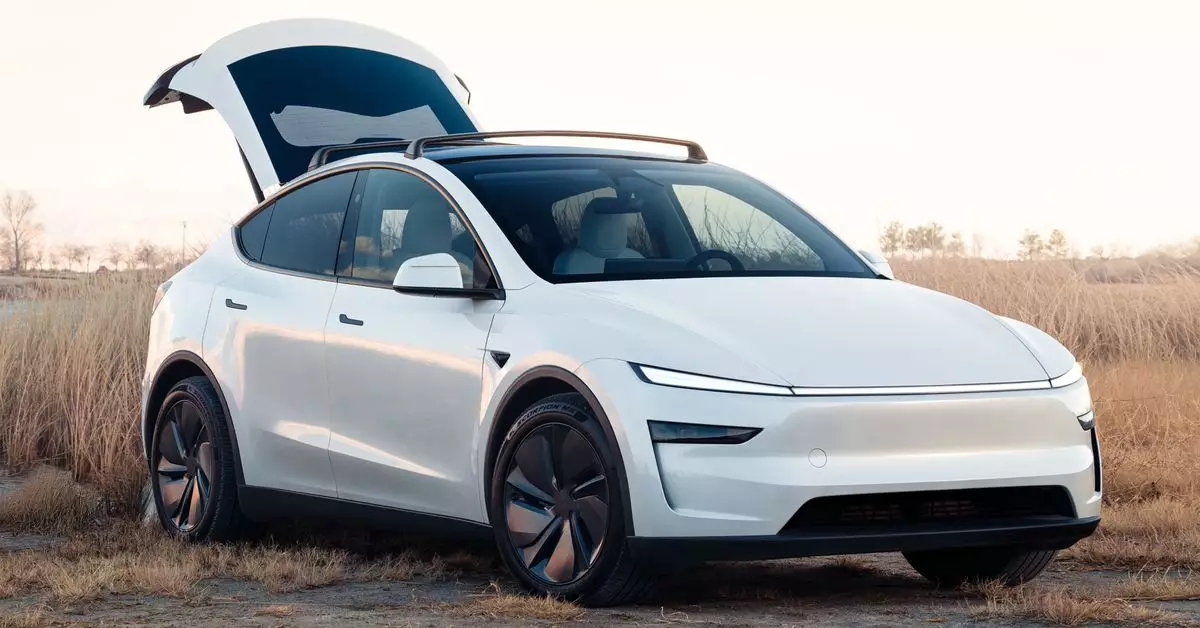Tesla is once again making headlines with the refreshed “Juniper” Model Y, which has made its way to markets across the Americas and Europe following a successful rollout in Asia-Pacific regions. As the automotive industry increasingly shifts toward electric vehicles (EVs), Tesla’s introduction of its updated Model Y comes at a pivotal moment. The American EV giant aims to appeal to a wider audience by offering a more advanced and aesthetically modern vehicle, despite facing challenges related to brand reputation and sales performance.
The Model Y is currently available in the “Launch Series,” which is a fully loaded trim level priced at $59,990 before incentives. This launch represents Tesla’s attempt to maintain competitiveness in a saturated market, where consumers are looking for not just performance but also a comprehensive suite of features. While this price point makes the Model Y accessible, it still targets the upper end of the market spectrum within the EV segment, which makes its performance and features even more critical.
A Closer Look at the Features
The refreshed Model Y boasts several key updates that are designed to enhance the overall driving experience. The front and rear lights have received a significant redesign, while the interior has been equipped with an 8-inch touchscreen for backseat passengers. This addition is a nod to the importance of infotainment and passenger entertainment, catering to family-sized demographics who may seek comfort and connectivity.
Moreover, Tesla has implemented acoustic glass treatment, which is a noteworthy feature aimed at minimizing cabin noise—a common complaint among EV users. Additionally, the updated sound system comes with more speakers, suggesting that entertainment within the vehicle is a priority for Tesla. One exciting development includes a retuned suspension that aims to improve ride quality, further emphasizing Tesla’s commitment to making their vehicles comfortable for everyday use.
However, a peculiar change that seems to have gone unnoticed involves the addition of a turn signal stalk, which diverges from Tesla’s trend of incorporating buttons on the steering wheel. This detail raises questions about Tesla’s design philosophy and whether consumer feedback has influenced these operational adjustments.
Despite the excitement surrounding the refreshed Model Y, Tesla is not without its challenges. Recently, the company reported its first year-over-year drop in sales, an alarming indicator that new design changes and features may not fully address broader concerns about brand reputation. The luxury EV market is evolving with multiple players offering competitive models, leading to scrutiny over Tesla’s market hold.
In an increasingly crowded marketplace, it’s crucial for Tesla to not only highlight its unique selling propositions—like the Full Self-Driving package and Acceleration Boost features—but to also assure consumers of its reliability and service quality. The perception of EVs is shifting, with consumers seeking not only advanced technology but also brand trust and support.
Tesla’s competitors are becoming more sophisticated in their offerings. With brands like Ford, Rivian, and several traditional automakers entering the EV space, Tesla must navigate a landscape that is rapidly evolving. The introduction of lower-priced alternatives from other manufacturers might sway price-sensitive customers away from the Model Y, particularly when considering similar performance metrics and range capabilities.
Despite this competitive pressure, Tesla is betting on the Model Y’s improved specifications, which include a 320-mile range compared to the older model’s 311 miles (prior to EPA validation). The updated version also claims improved acceleration from 0-60 mph in just 4.1 seconds, showcasing Tesla’s attempt to enhance performance legitimacy even as the top speed has been reduced.
While the revamped Tesla Model Y promises exciting updates and features aimed at solidifying its position in the EV market, it faces the pressing issues of brand reputation and competitive pressures that cannot be ignored. The road ahead will require not just feature enhancements but a comprehensive strategy to win back consumer trust in a changing automotive landscape. Tesla’s performance in the coming months will reveal whether these updates can translate into a renewal of enthusiasm and sales success.

